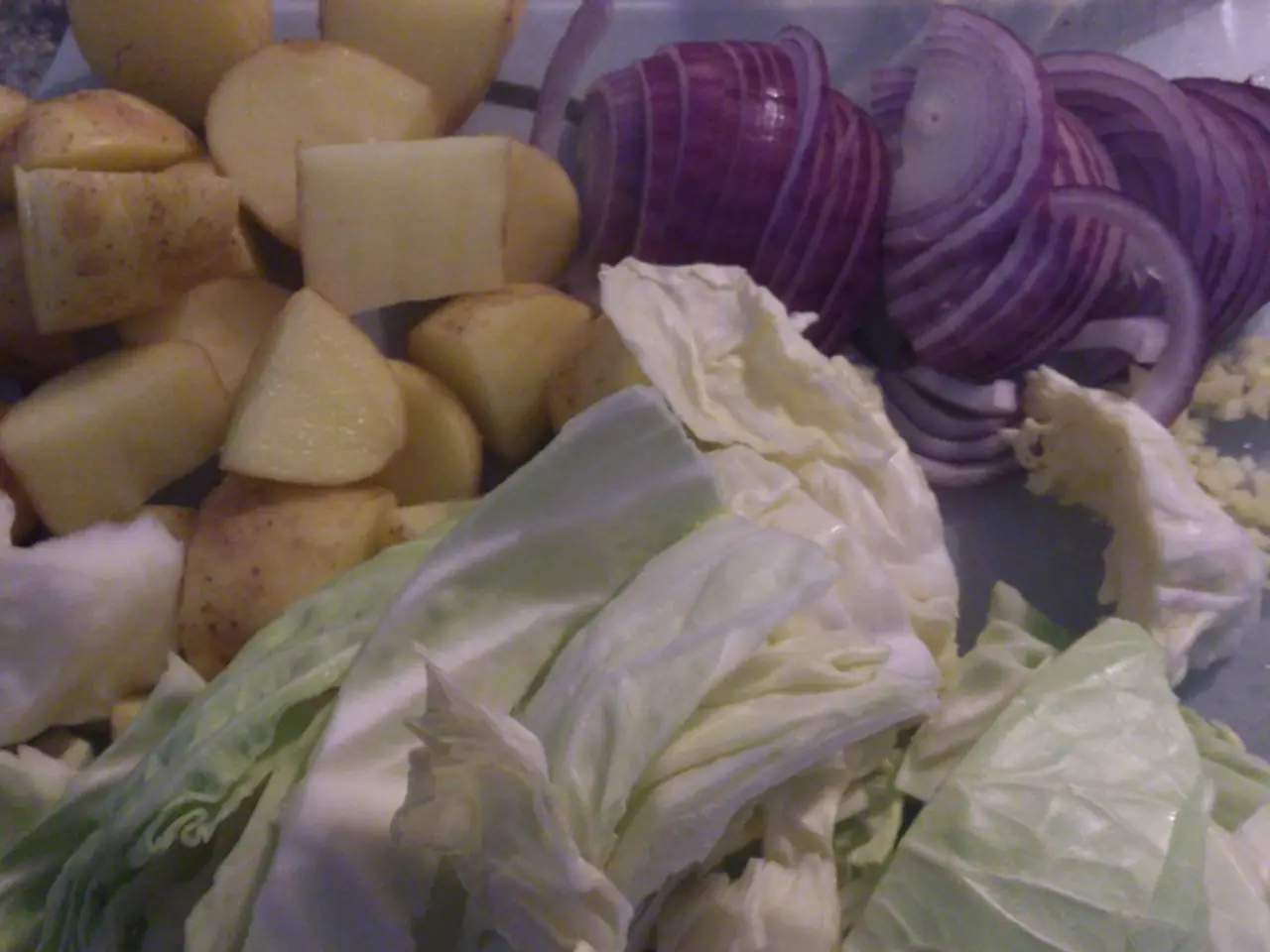Potatoes that have sprouted: A potential risk in the kitchen or a tasty salvage option?
Sprouted potatoes might seem unappetizing, but with careful inspection and preparation, they can still be safe to eat. Here's a guide to help you determine if a sprouted potato is edible and how to prepare it properly.
Sprouted potatoes contain natural toxins called glycoalkaloids, such as solanine and chaconine, which can be harmful in large amounts. However, it is generally safe to eat a sprouted potato as long as you remove the sprouts and any green parts.
To ensure the sprouted potato is still edible, follow these guidelines:
- Check firmness: The potato should be firm. Soft, wrinkled, or shriveled potatoes should be discarded.
- Remove sprouts and green skin: Cut off all sprouts and any green discoloration, which indicates increased toxin levels from light exposure.
- Smell the potato: If it has a bitter or off smell, it’s safer to throw it away.
- Avoid large or numerous sprouts: If sprouts are large or numerous and the potato shows other signs of aging, discard it.
If more than a third of a potato is green or it's gone full Hulk, it should be discarded. Green patches under the skin of a potato indicate the presence of glycoalkaloids, and chlorophyll, while harmless on its own, is a sign that glycoalkaloids might be present.
Proper storage in a cool, dark, and dry place helps prevent sprouting and greening. Keep potatoes away from onions as they make each other sprout faster. The longer a potato is left to sprout, the more bitter and unpleasant the taste.
Consuming the sprouts themselves or green parts may cause nausea, headaches, or digestive upset due to solanine toxicity. Therefore, when in doubt, it is safer to discard the sprouted potato rather than risk toxicity.
In extreme cases, excess glycoalkaloids can lead to symptoms similar to a medieval plague. So, take care when dealing with sprouted potatoes to ensure a safe and enjoyable meal.
[1] Potato Council. (2021). Sprouting Potatoes. Retrieved from https://www.potato.co.uk/advice/sprouting-potatoes/
[2] University of Missouri Extension. (n.d.). Sprouted Potatoes. Retrieved from https://extension.missouri.edu/publications/G8457
[3] Food Safety and Inspection Service. (n.d.). Potatoes. Retrieved from https://www.fsis.usda.gov/wps/portal/fsis/topics/food-safety-education/get-answers/food-safety-fact-sheets/fruits-and-vegetables/potatoes
[4] Colorado State University Extension. (n.d.). Potato Storage and Quality. Retrieved from https://extension.colostate.edu/topic-areas/food-nutrition/potato-storage-and-quality-5-616/
[5] Mayo Clinic. (2018). Solanine poisoning. Retrieved from https://www.mayoclinic.org/diseases-conditions/solanine-poisoning/symptoms-causes/syc-20359185
- The green discoloration on a sprouted potato is a sign of increased toxin levels due to light exposure.
- Removing the sprouts and any green parts from a sprouted potato can make it safe to eat.
- Proper storage of potatoes in a cool, dark, and dry place helps prevent sprouting and greening.
- Consuming the sprouts or green parts of a potato may cause nausea, headaches, or digestive upset due to solanine toxicity.




